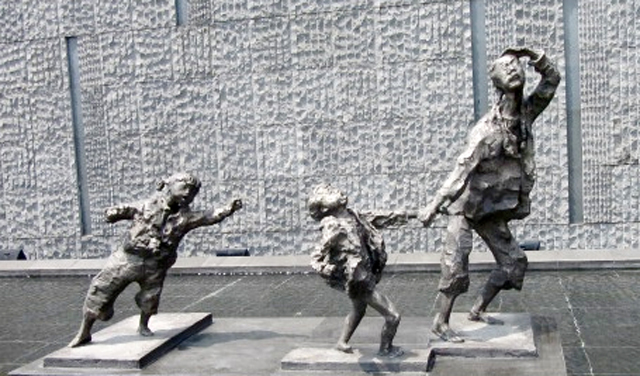May 10, 2015, Honolulu:
We have been planning and organizing the project, “In the Footsteps of Zhou Enlai”, for more than two years — and now the great adventure begins!
Full of energy, we flew non-stop on China-Eastern Airlines from Honolulu to Shanghai. Departing at 10 am. on the morning of Sunday, May 10 2015, we arrived Shanghai the next afternoon.
The first Footstep of Zhou Enlai was found earlier than we thought.
Part 1: Shanghai
On arrival at the Ramada International Hotel, there was an exhibit in the lobby about Zhou Enlai, and the special watch he bought in Shanghai.
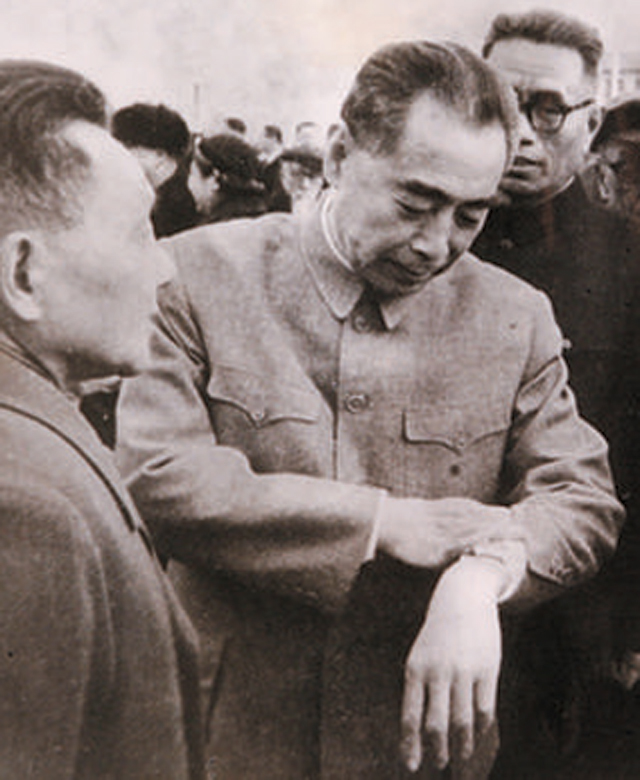
This was news to us; we had never heard this story. We called on the hotel managers, and had dinner with them, to learn more.
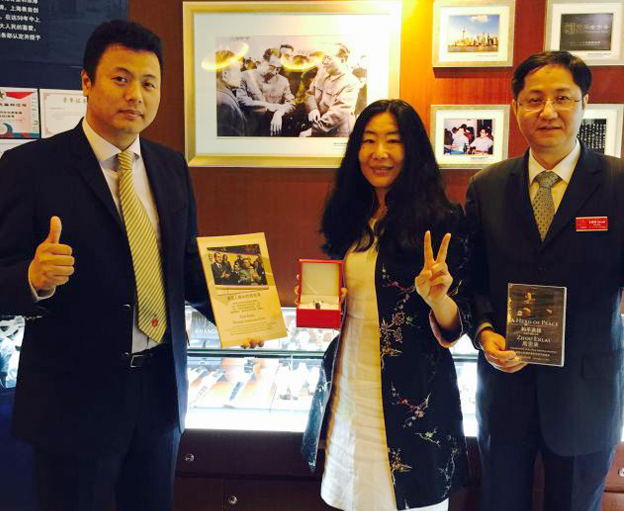
They explained that the Shanghai Watch Company has been making fine watches since 1955, and Premier Zhou Enlai, in order to encourage domestic Chinese industry and fine craftsmanship, bought a watch from from his personal pocket in 1958. He encouraged all Chinese leaders to wear one, and wore his for many years to every official and diplomatic event around the world.
The company today makes a perfect replica of Premier Zhou’s watch; the original is at the West Flower Hall in Beijing. See Shanghai Watches.
A Shanghai Watch was presented by the Shanghai Watch chairman to Zhou Xiaofang, co-founder of the Zhou Enlai Peace Institute.
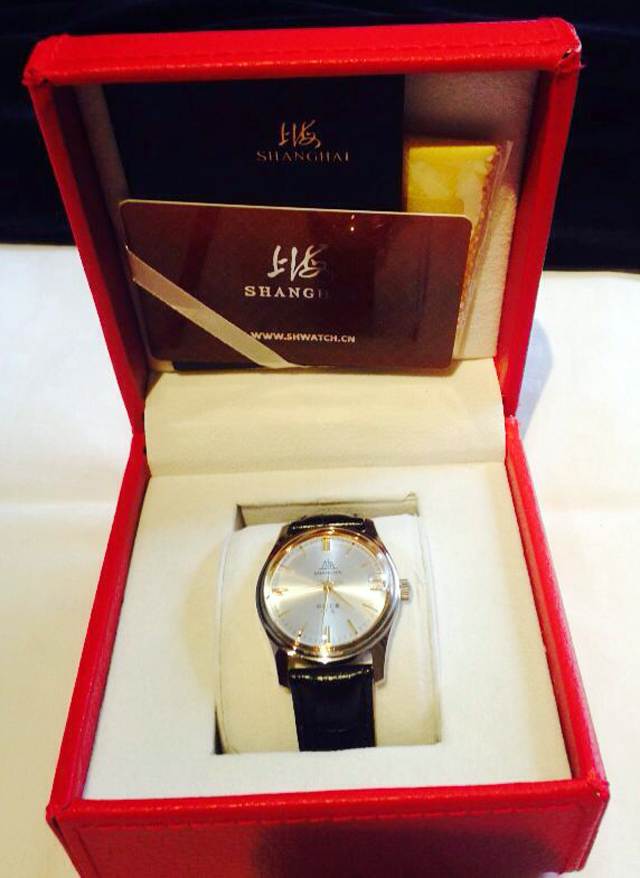
We prepared for the formal launch of the Footsteps project, to be held at the official former residence of Premier Zhou Enlai in Shanghai, in the area of the old French Concession. Invitations were sent:
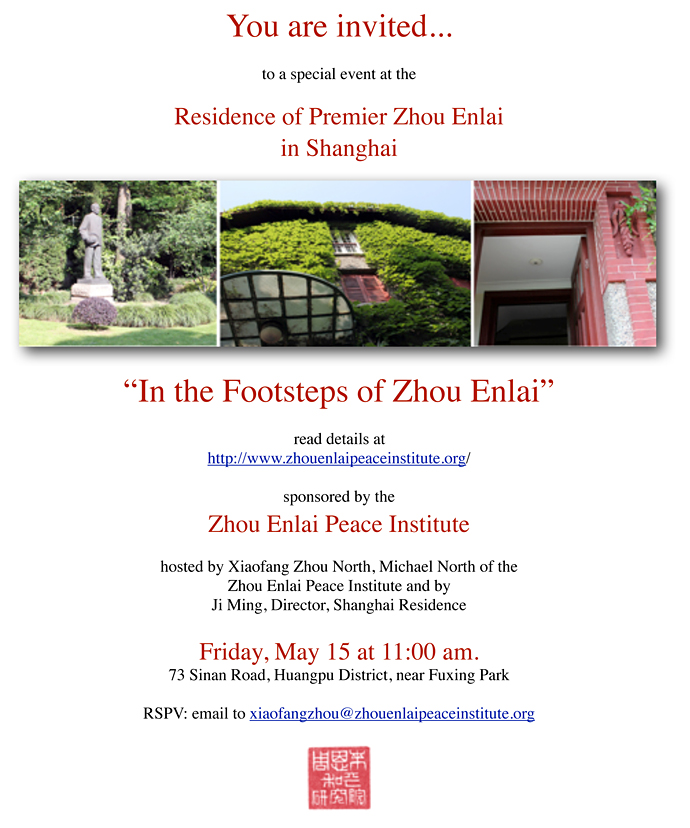
We had a number of visits, conducted research, and recorded interviews with people at the Residence, gathering important stories of the days when Premier Zhou lived in this place, planning the emergence of the New China, resisting the Japanese invasion, and negotiating numerous peace agreements.
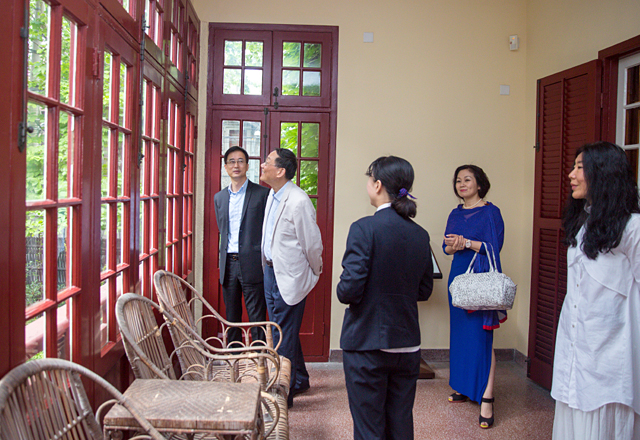
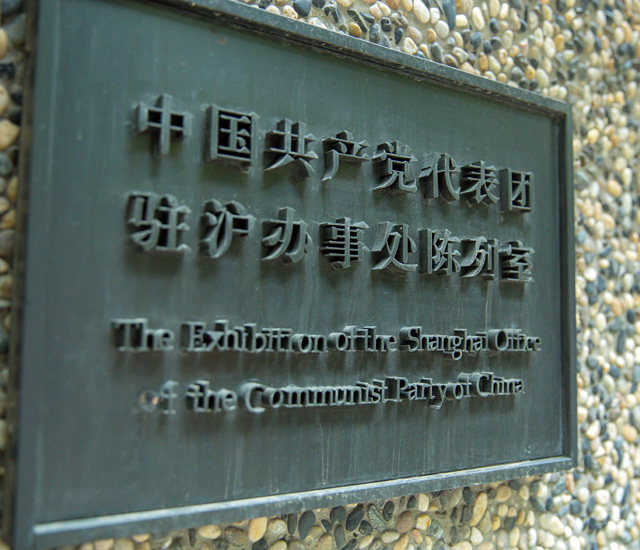
Zhou Xiaofang and her assistant, Sun Xiaodan, arranged flower presentations and awards at the monument to Zhou Enlai in the lovely garden next to the Residence.
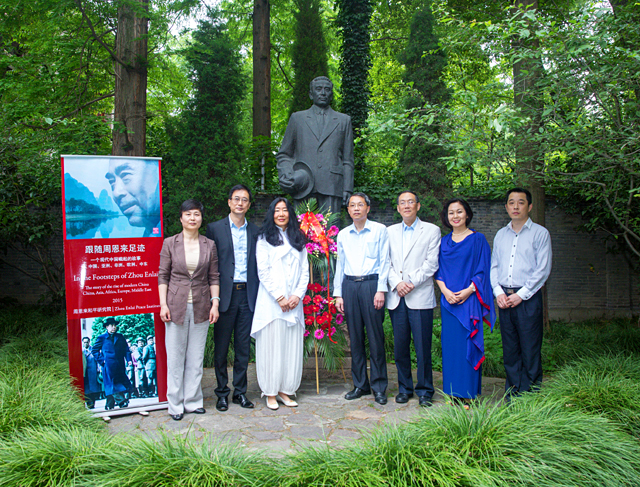
In this group is Zhu Kun, chairman of Bai Hui International, a chief sponsor of the project, and Ji Ming, executive director of the Shanghai Residence of Premier Zhou Enlai, a Chinese national historic site.
A friend drew a sketch of the scene around dinner in Shanghai, on the evening of May 12, 2015:

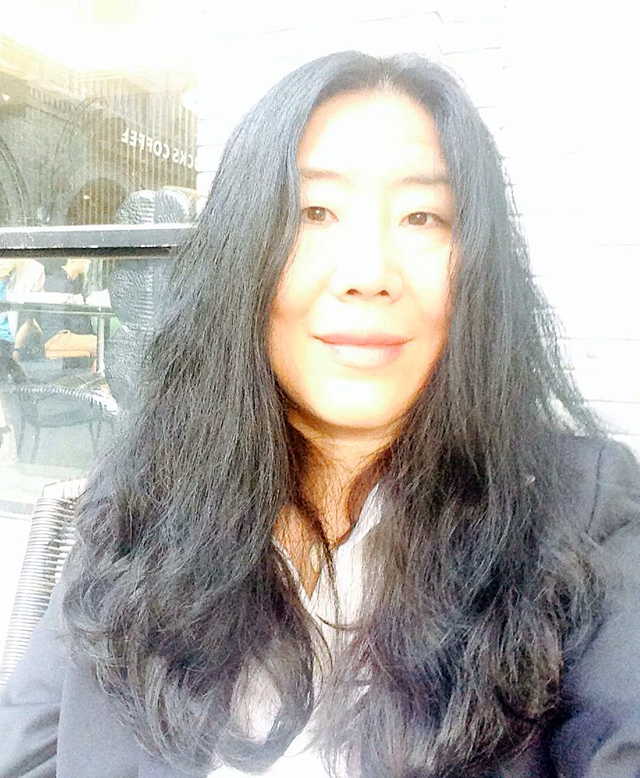
Author and filmmaker Xiaofang Zhou North, at the launch of the project, “In the Footsteps of Zhou Enlai.”
Friends from Honolulu joined us in Shanghai, including Roger Epstein (left) and Barry Taff (right) of the US-China Legal Network.
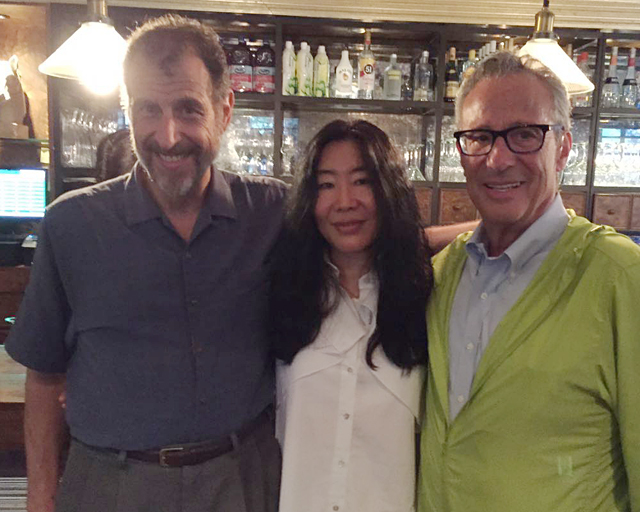
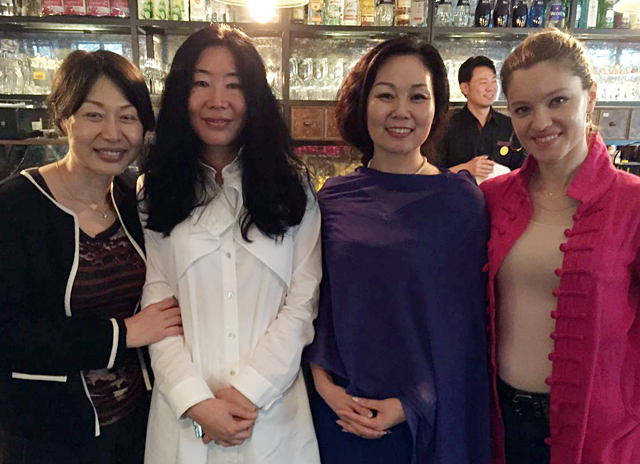
Other friends included “Cherry” Chai Ying, owner of a famous Shanghai maker of fine china, who sponsored lunch for everyone; left; Sun Xiaodan, who came from Xian to work alongside Xiaofang for this project; and Elyse Ribbens (right), our good friend from many events in Beijing — media executive, broadcaster and actress resident in Shanghai.
A few of the friends gathered for the opening event, below, including Michael Funnell, Shanghai resident (second from the left), who is related to Michael North, co-founder of the Zhou Enlai Peace Institute.
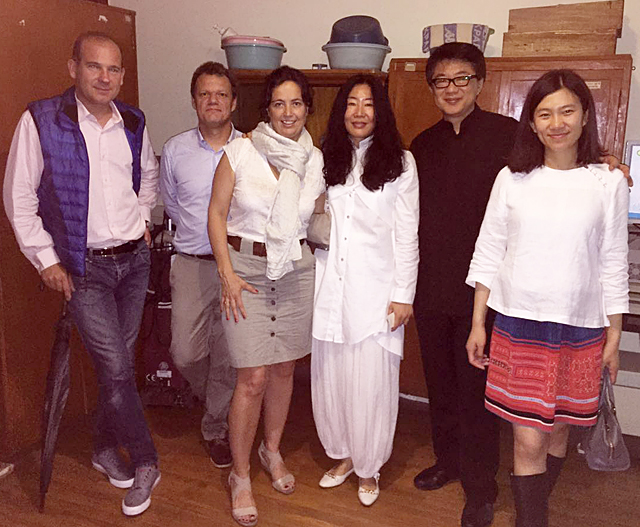
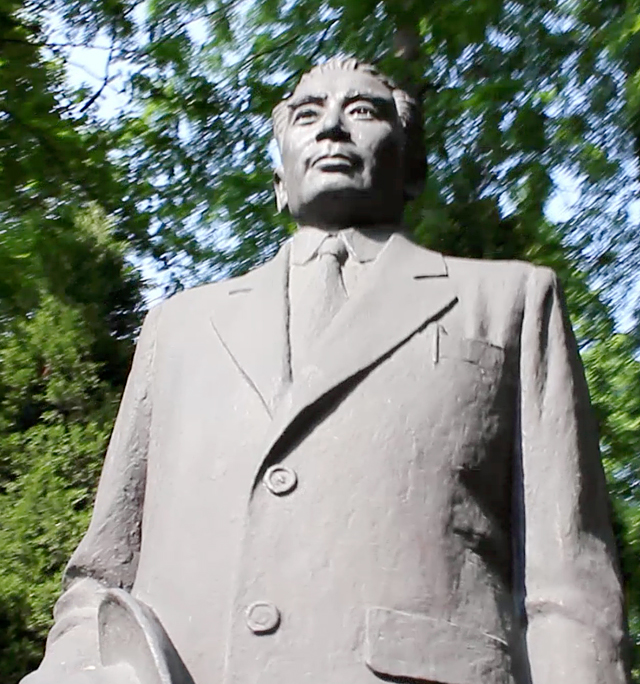
At the center of the garden at the Shanghai Residence is this figure of Zhou Enlai, depicted as he looked in 1946 when he lived here.
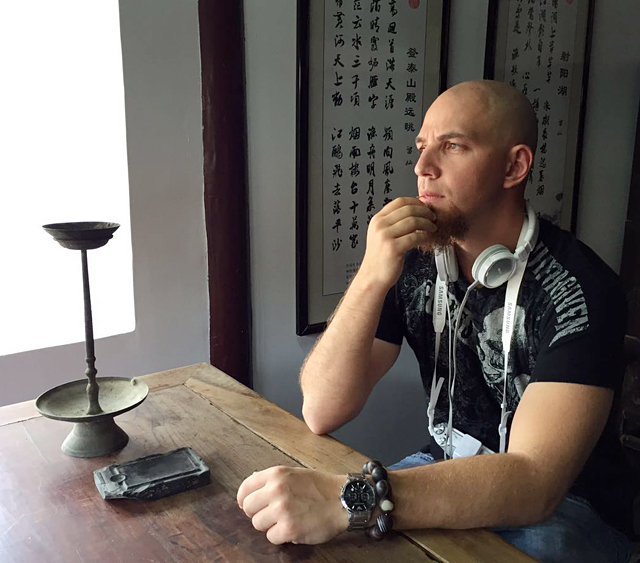
David Castellano is a young American producer, originally from New York City, now resident in Honolulu. He learned media production at ‘Olelo Community Media in Honolulu, and is responsible for managing a complex traveling set of video and still cameras, audio recorders, data communications and digital storage to support the Footsteps media operation.
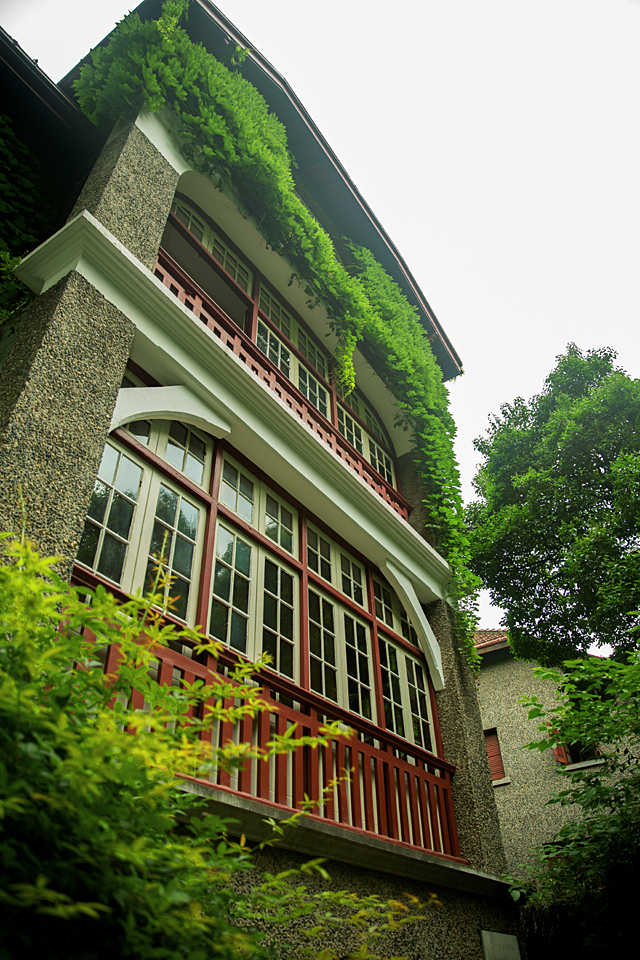
Part 2: Nanjing
Down the beautiful, tree-lined boulevards of old Nanjing, Zhou Xiaofang and tour assistant Sun Xiaodan prepare to arrive at the former residence of Premier Zhou Enlai.
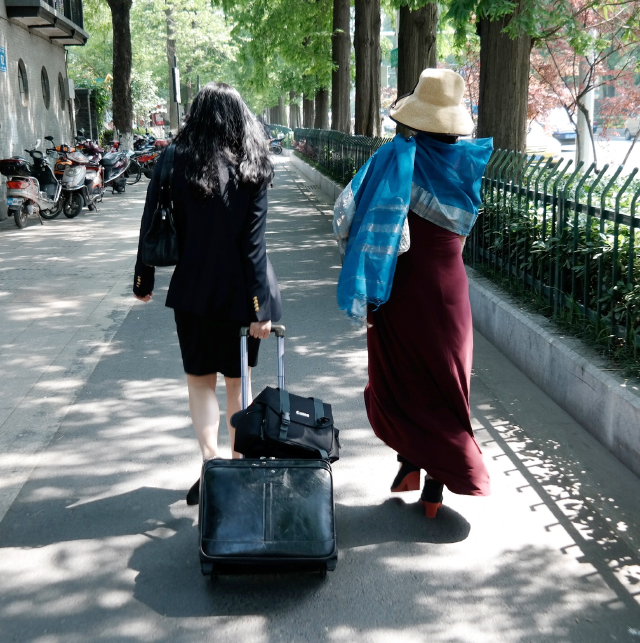
The curator of the Nanjing Meiyuan Memorial, Shen Hau, is on hand to greet the Footsteps crew.
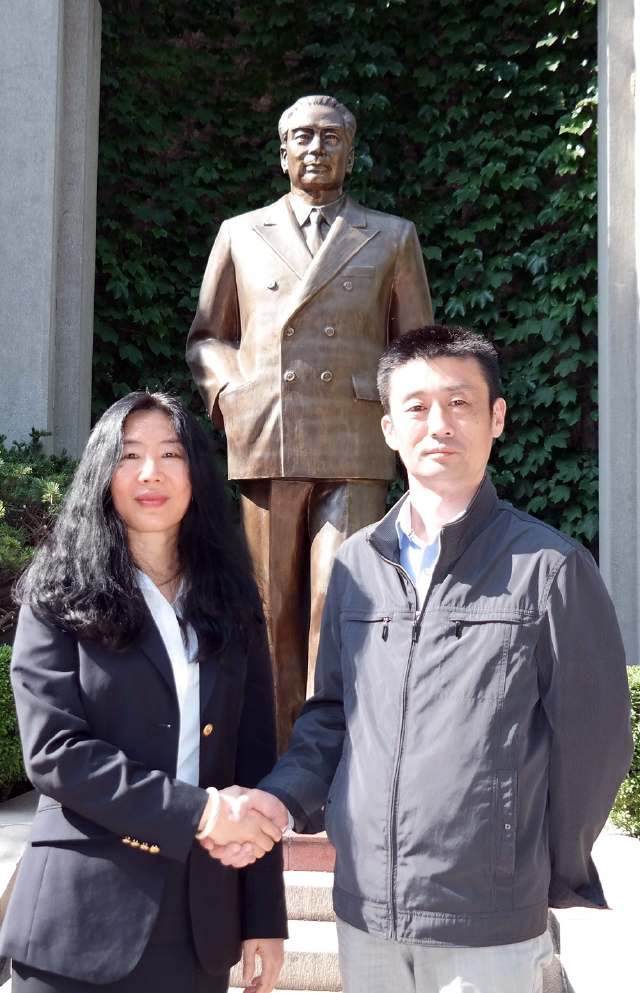
Flowers are presented, to mark this important occasion.
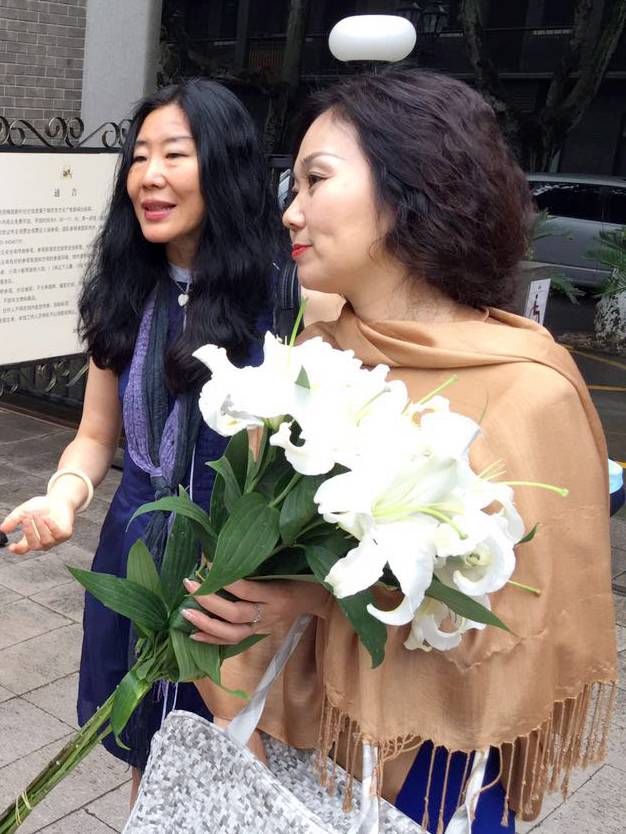
One of the sons of a participant in the Long March speaks to a group of school children from Nanjing; he presents antique eyeglasses, a suitcase and a cable accessory holder, part of the living history of China.
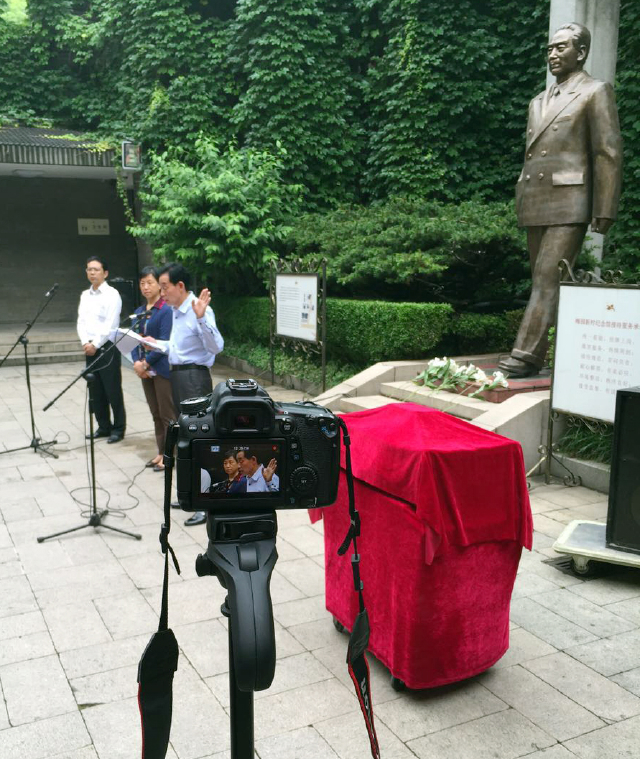
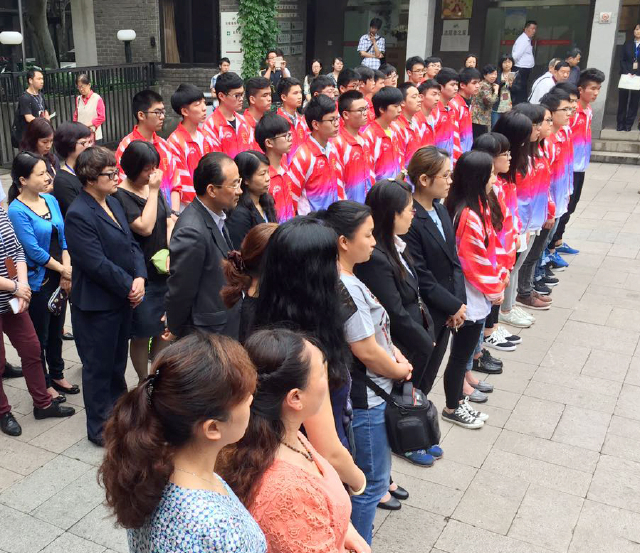
Xiaofang interviewed the son of the Long March veteran in depth, reflecting on the stories of Zhou Enlai when he resided in Nanjing, and lived in this place.

Xiaofang points out a pomegranate tree planted here by Zhou Enlai and his wife, Deng Ying Chao.
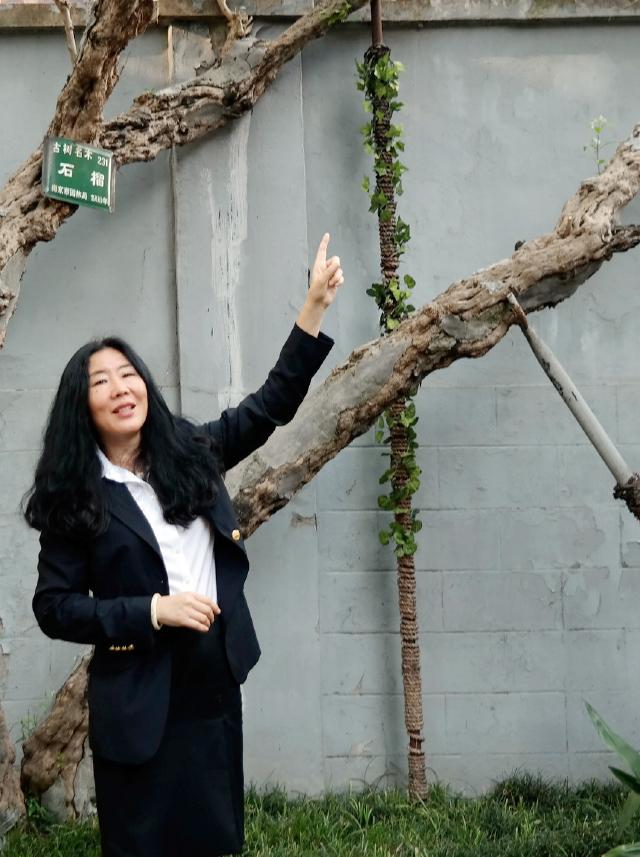
Zhou Enlai in a moment of rest, having a glass of tea in the garden at Nanjing.
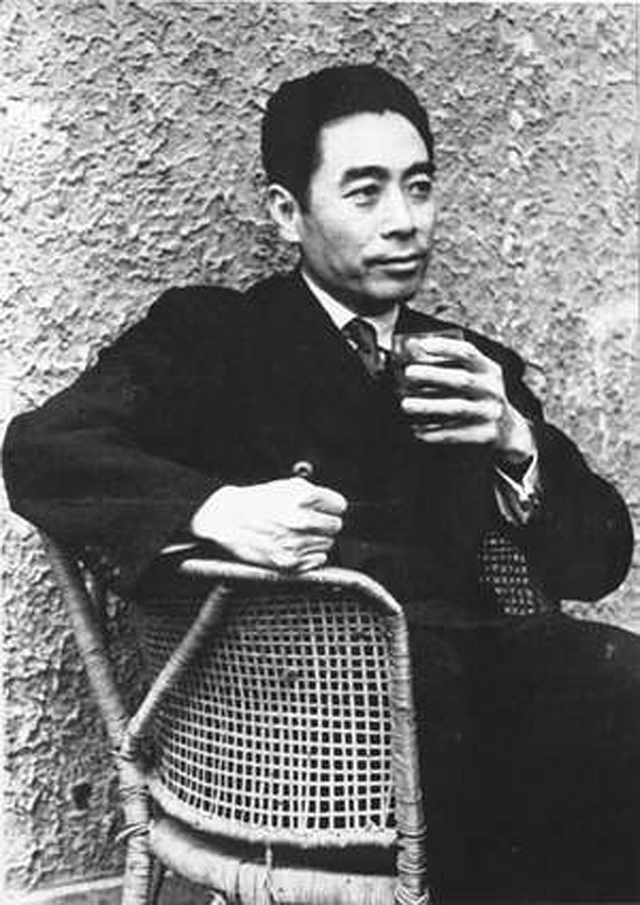
The memorial to Zhou Enlai here in Nanjing is one of the most elegant and moving in all of China.
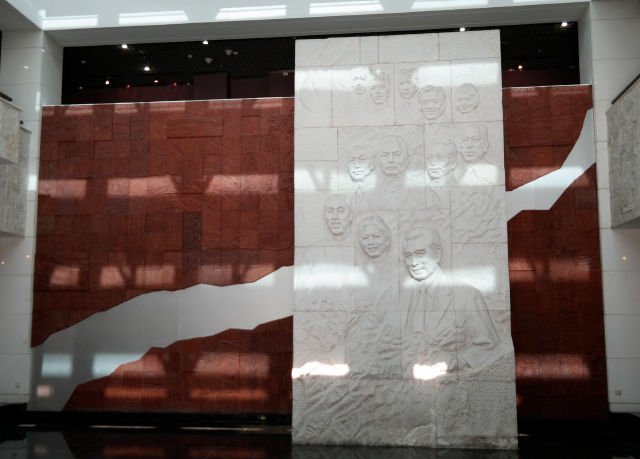
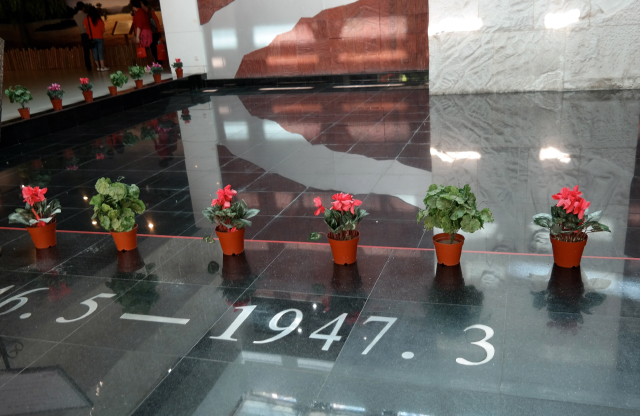
In the museum is the former Premier’s big, powerful Buick automobile; whenever possible, Zhou Enlai preferred Buicks.
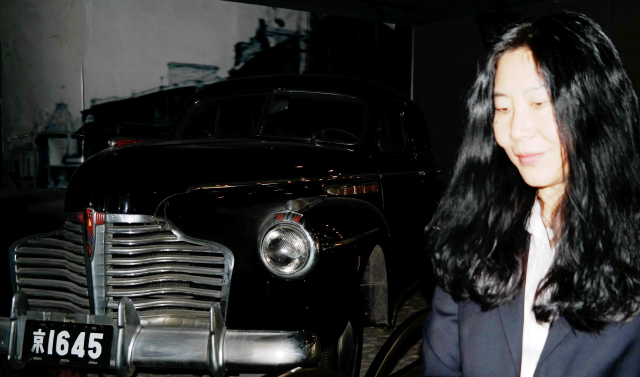
A leather jacket worn by Zhou Enlai evokes his reputation for action and personal good taste.
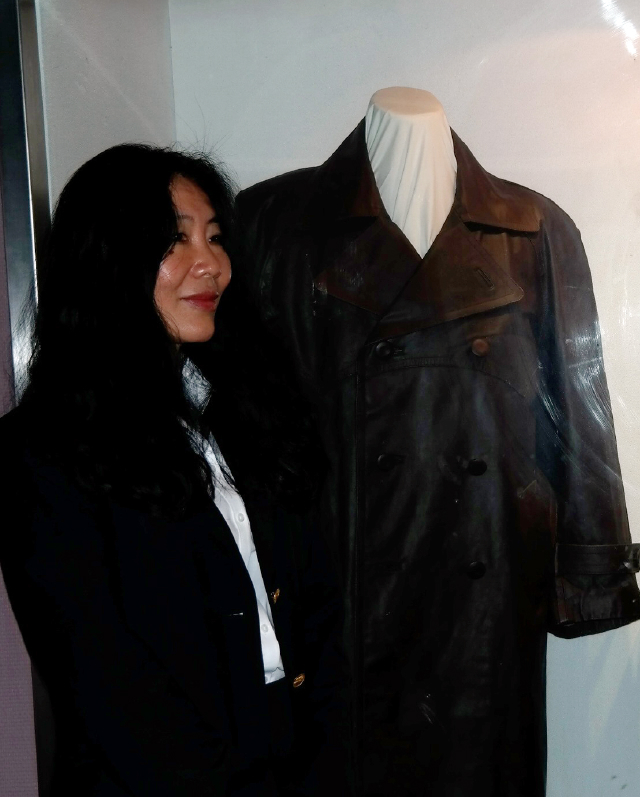
The Footsteps crew — David Castellano and Zhou Xiaofang from Honolulu, and Sun Xiaodan from Xian, visit the peaceful figure of Premier Zhou in Nanjing.
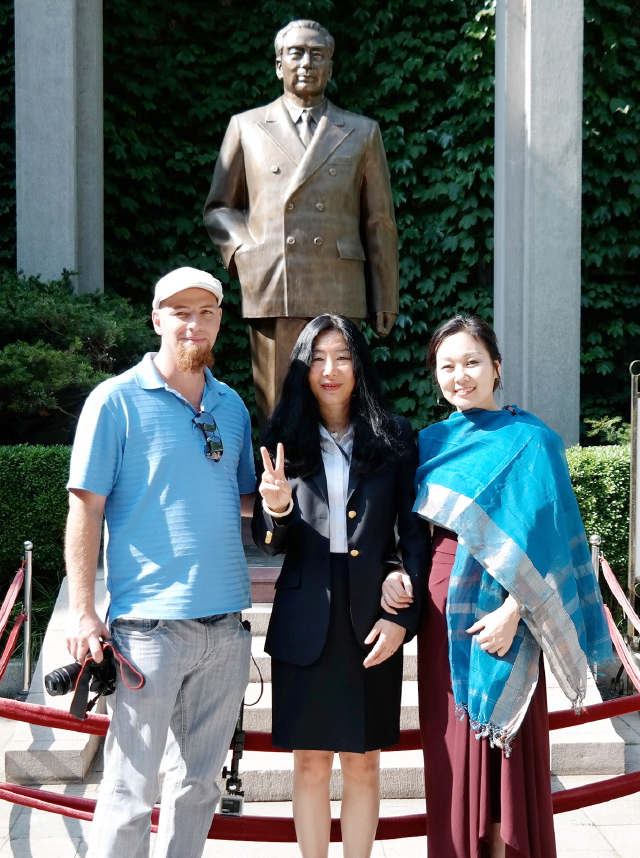
Xiaofang explains the photo montage, where scenes from throughout Zhou Enlai’s life are shown. The home where they stand is still well-preserved and cared for. Deng Ying Chao is shown at three different ages — young at the left, in her prime in the center, and older at the right.
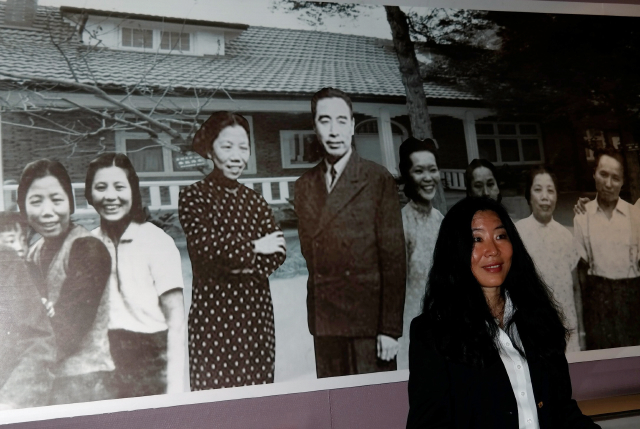
The garden rooftops of the Nanjing estate, in the center of the old quarter of Nanjing, with this historic pomegranate tree in the foreground.
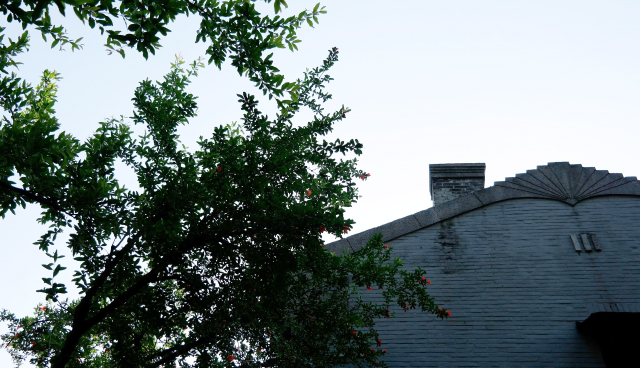
A famous photograph of Zhou Enlai, walking out of a gate in the Nanjing residence, is re-enacted by Xiaofang.
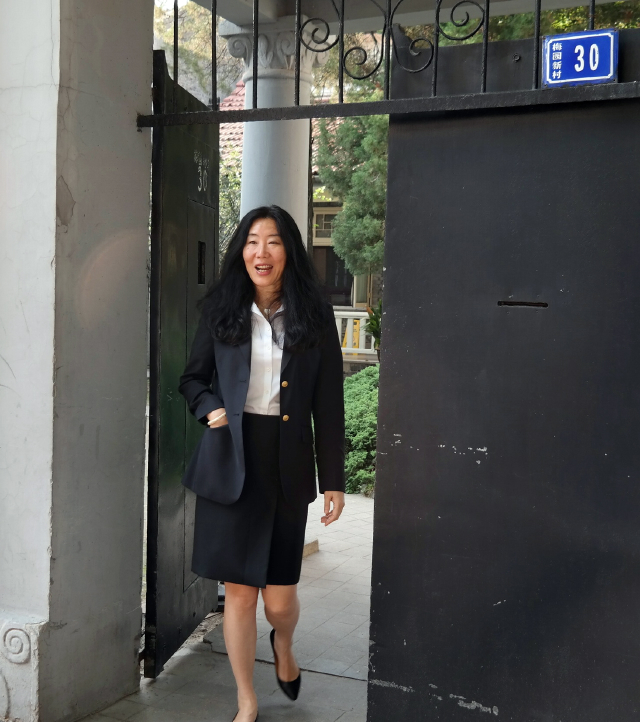
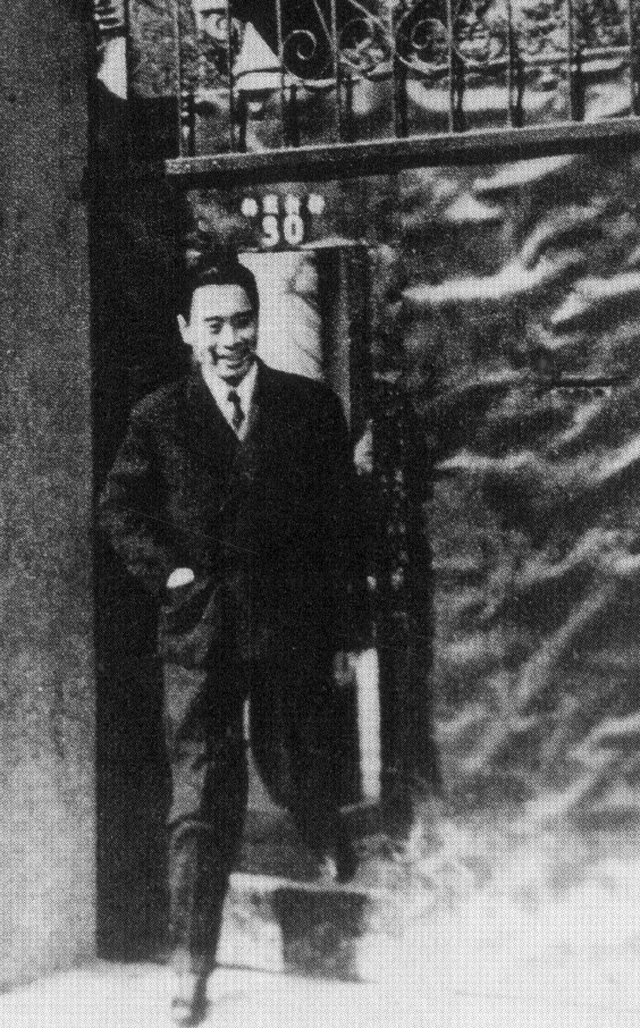
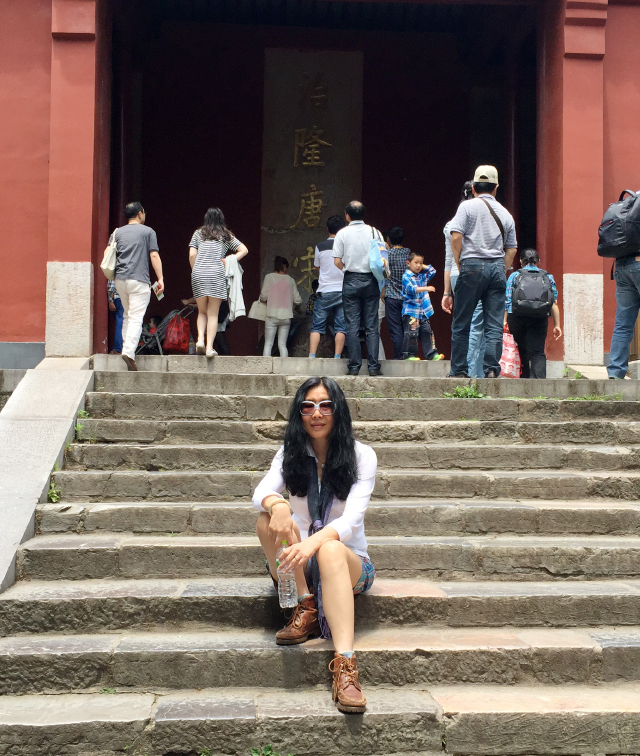
On a visit to the Zhong Shan memorial to Sun Yatsen in Nanjing — the first president of the Republic of China, 1912. Sun Yatsen was an inspiration to Zhou Enlai; he was educated at ‘Iolani School and Punahou School in Honolulu for some time, during the formational years before the new Chinese Republic.
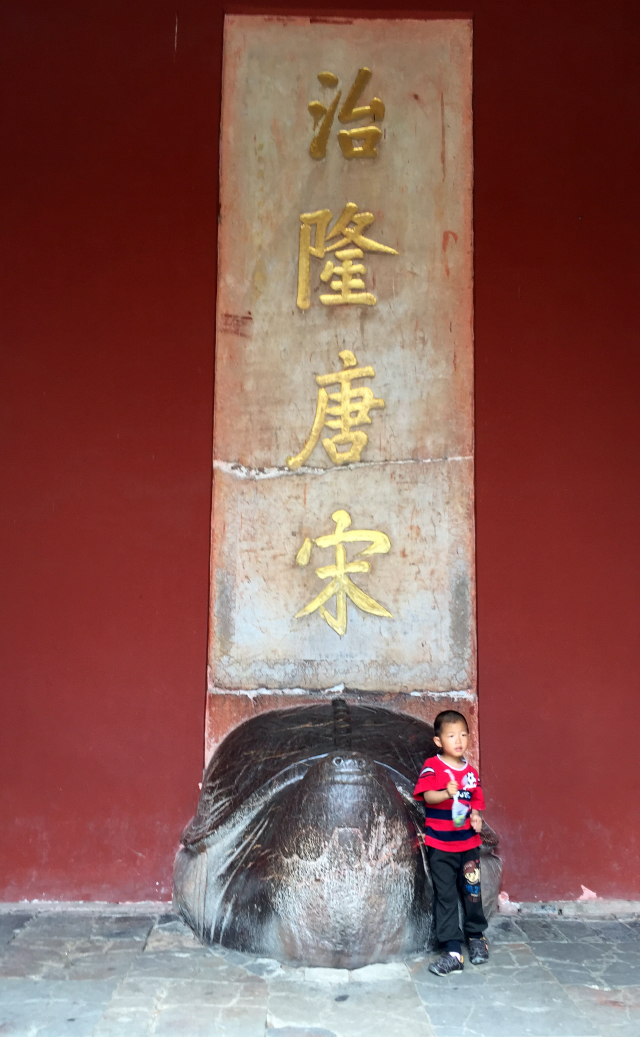
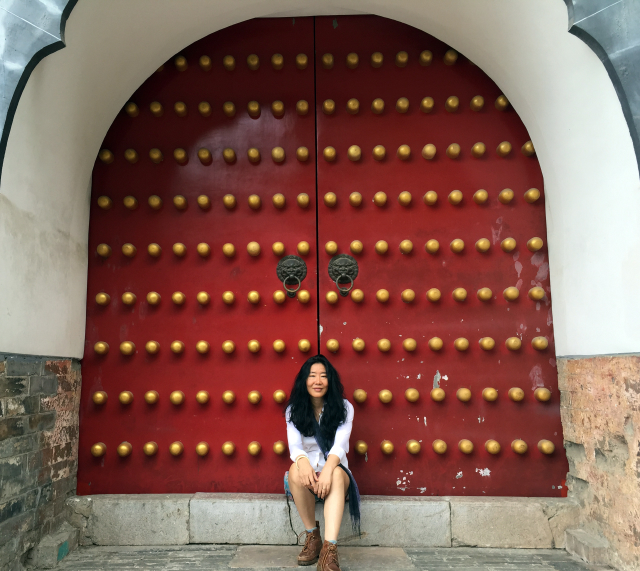
A gate in the memorial echoes a similar gate in Beijing, at the entrance to the Forbidden City.
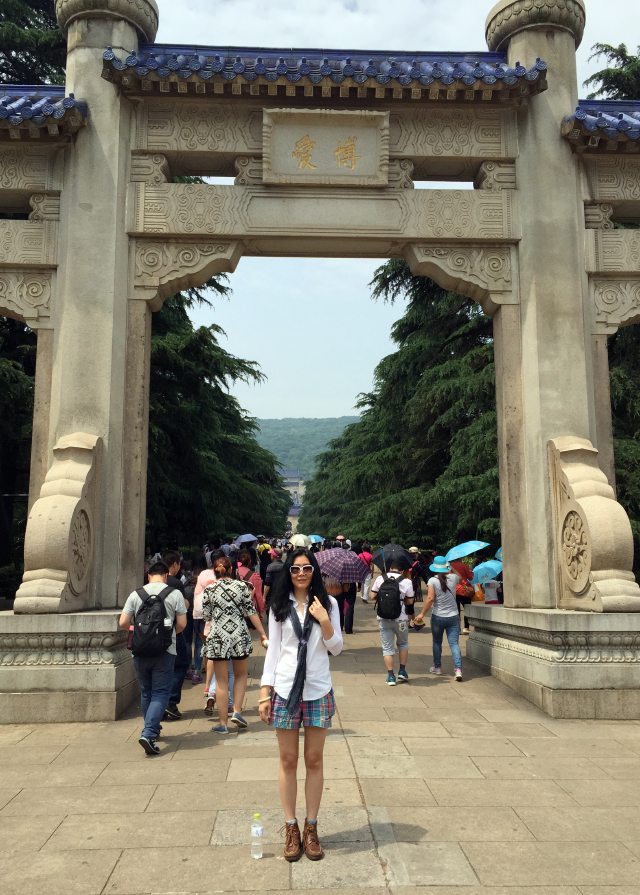
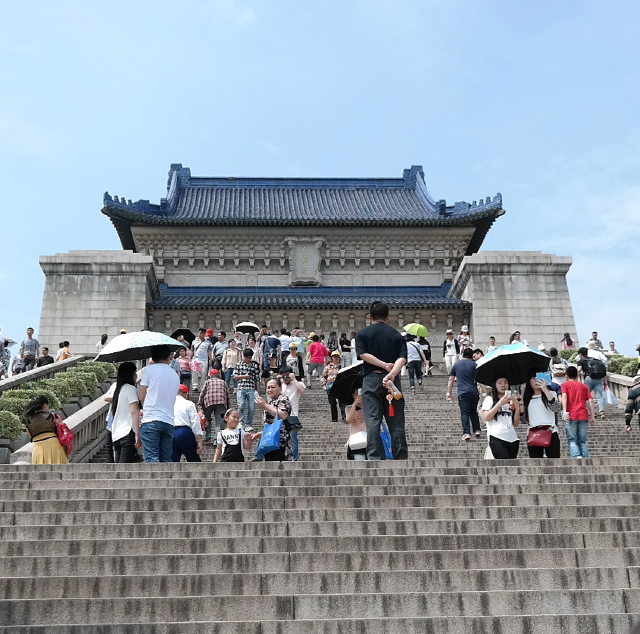
Crowds gather every day in Nanjing, to pay respects to one of the fathers of the modern Chinese nation.
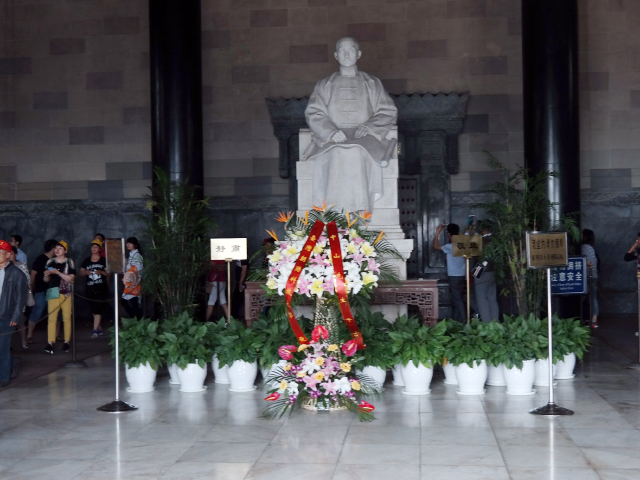
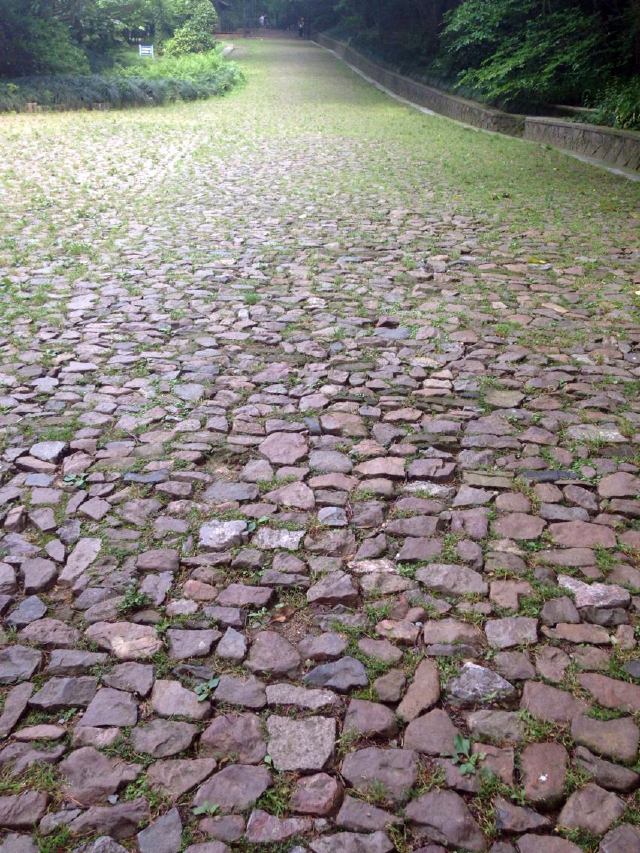
The stones leading to the Zhong Shan memorial to Sun Yatsen in Nanjing.
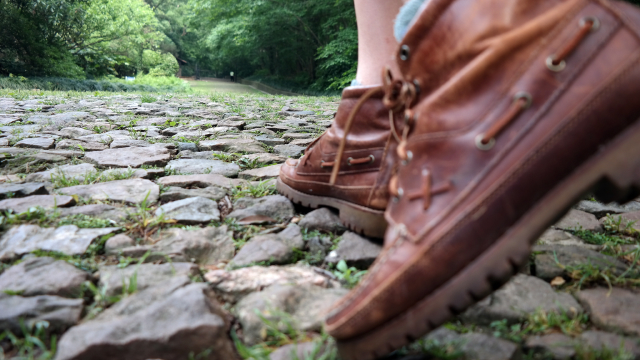
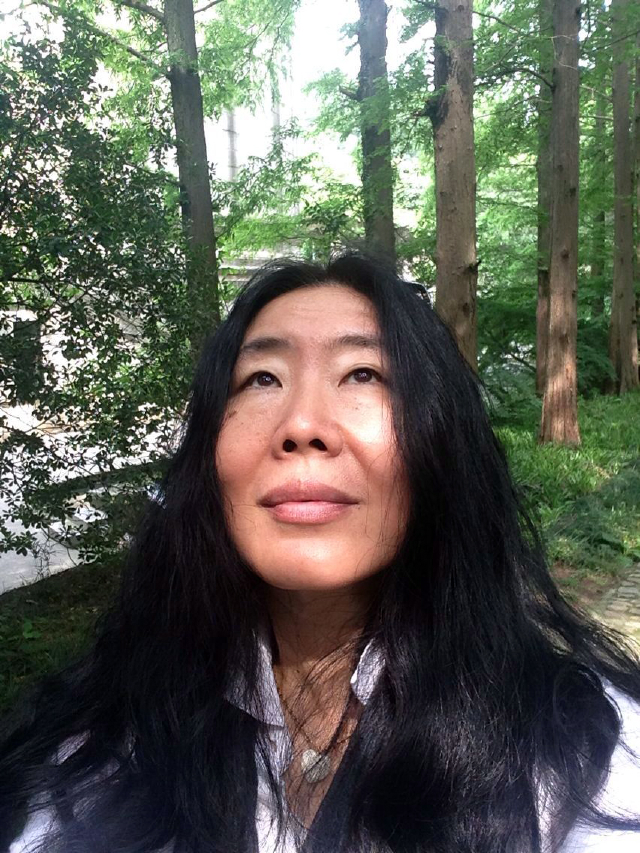
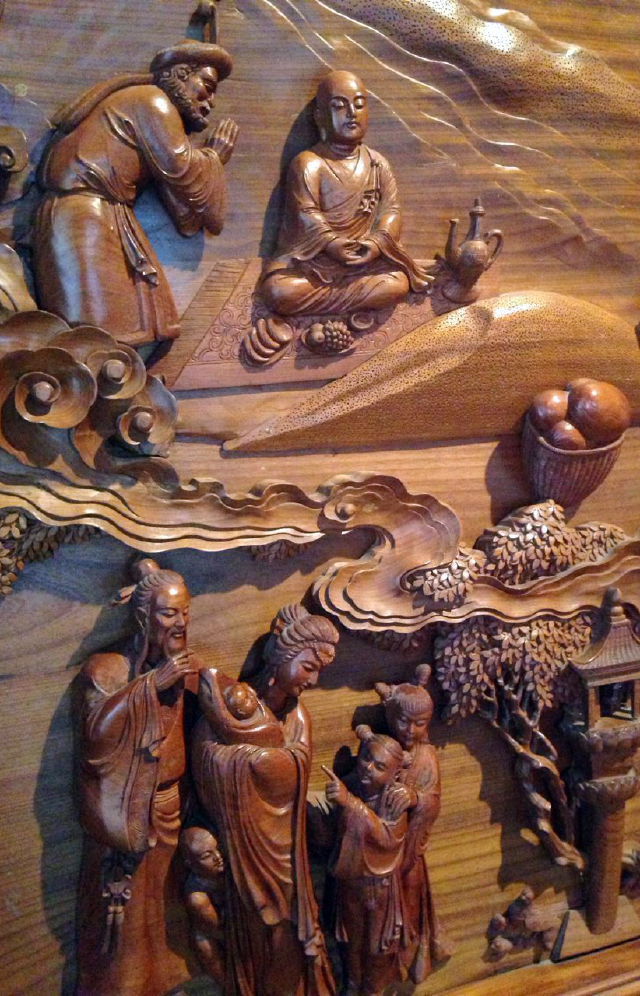
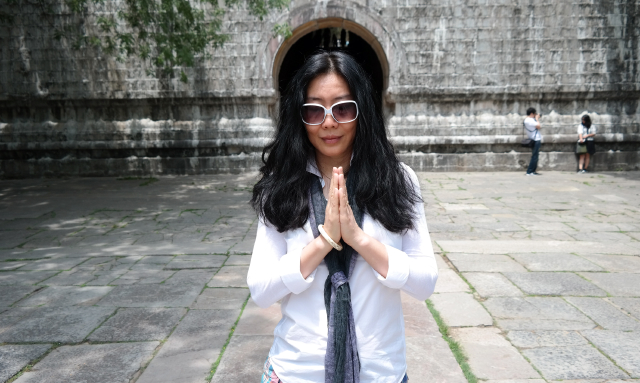
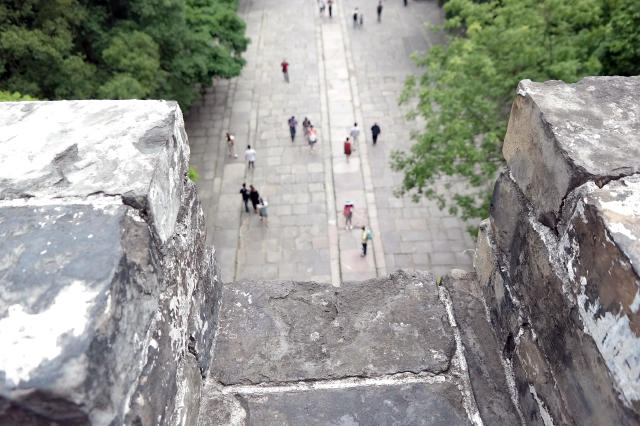
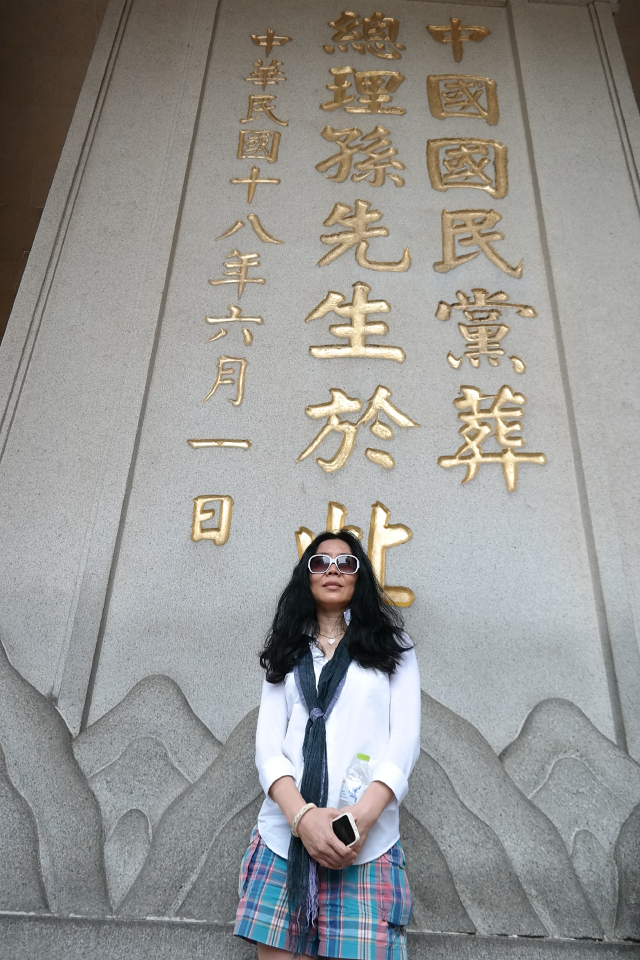
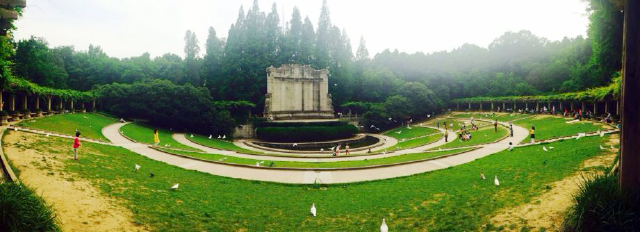
During the Nanjing Massacre, for six weeks beginning on December 13, 1937, an estimated 300,000 civilians were killed by occupying Japanese forces, accompanied by widespread rape and looting. The memorial is a solemn reminder of this tragic event.
At the entrance to the Nanjing Memorial.
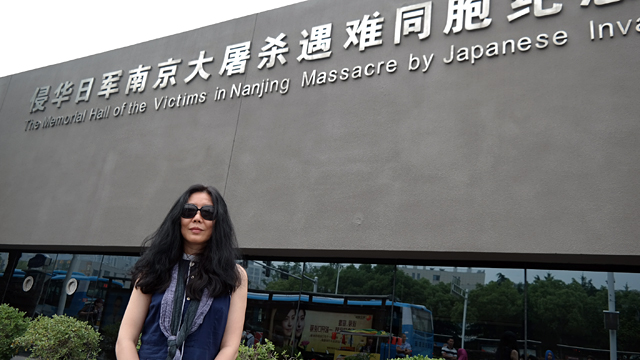
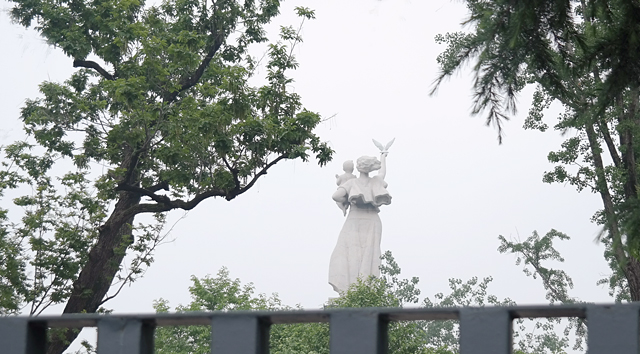
This figure represents the thousands of women and children who lost their lives in those short brutal weeks in 1937 and 1938. Zhou Enlai did everything possible, working with all the people and parties of China, and with the United States, to resist Japan and ultimately force them out of China.
Nanjing represents the ultimate evil and horror of war, and Zhou Enlai dedicated his life to preventing it, and to building the foundation of peace. When he was Premier, he made a special point of receiving visitors from Japan, where he had studied as a young man, to meet with peacemakers.
